Structure of karst groundwater system and its water exploration in Wumeng Mountain area
-
摘要: 为推动乌蒙山贫困缺水区生态环境建设、地下水资源合理利用,以昭通市作为重点调查区,基于地质调查、泉流量统计、水质检测,展开岩溶地下水富集规律及物探找水方法的研究。结果表明:①研究区岩溶地下水系统以条带岭谷型、埋藏型为主。条带岭谷型岩溶地下水系统以现代岩溶为主,目标含水层多、发育深度有限、岩溶发育及富水程度差异大,富水块段为背斜核部及两翼、向斜核部、断层影响带;埋藏型岩溶地下水系统以古岩溶为主,目标含水层单一、发育深度较深且极不均匀,富水块段为断陷谷盆埋藏的古岩溶。②地下水化学类型以HCO3型、HCO3·SO4型为主,条带岭谷型、埋藏型岩溶水分别占96.73%,92.93%,水质总体较好,综合水质评价Ⅰ~Ⅲ类水占比分别为80.84%,64.41%。③建议对>50 L/s大泉进行提引、丰储冬用,对富水块段进行综合物探探测和钻探验证的方法找水。④综合物探找水方法:先通过高密度电法、联合剖面法查明岩溶破碎带及断层,再激电测深确定极化率高的含水层,最后综合测井和钻孔揭露确定具体出水段及涌水量,找水成功率为86.67%,适用于条带岭谷型及浅埋岩溶地下水。Abstract: The Wumeng Mountain Contiguous Zone in China always suffers from deficiency of groundwater resources.The Zhaotong area of Yunnan Provience belongs to the Wumeng Mountain area, which was the key area.We carried out geological survey, spring flow statistics and water quality evaluation in karst stratum.The strip karst area, which always located in ridge-valley area, with many target aquifers, karst shallow.Groundwater was concentrated in the core of anticlinoria and both wings, the core of syncline and fault zone.The buried karst water mainly concentrated in the paleo-karst stratum in Zhaolu fault basin, and covered below Tertiary system.Most chemical type of groundwater was determined as HCO3 and HCO3·SO4 type.The strip and buried karst water account for 96.73% and 92.93% respectively.The comprehensive water quality evaluation results of 80.84% simple analysis and 64.41% total analysis were classified as Ⅰ-Ⅲ.We suggest that large flow springs more than 50 L/s should be extracted, diverted and stored for winter use.Combined with geophysical exploration and drilling verification, the target aquifer was more successfully found in water-rich section of strip and shallow buried karst areas.Firstly, the high-density electrical method and combined profile method were conducted to find out the karst fracture zone and fault.Then, the IP sounding was set to explore the depth of the aquifer with high polarizability.Finally, the water supply segment and water inflow were determined by comprehensive logging and drilling.The rate of successfully extracting water was 86.67%.Then, we could recommend the well location.
-
西南岩溶山区具有地上、地下的空间双层介质的结构,地下岩溶发育引起地表水源渗漏,地表径流量小,当地居民生活及经济发展依赖于丰富的岩溶地下水资源[1-3]。且岩溶地下水分布极不均匀,多数地区存在不同程度的干旱缺水、贫困人口面积大的问题[4-6]。乌蒙山连片贫困区干旱缺水严重,解决吃水用水难题被纳入脱贫的硬性指标,主要地下水类型为松散岩裂隙水、基岩裂隙水及碳酸盐岩岩溶水。针对基岩裂隙水分布规律及应用已有研究[7-9],以分散引用为主,但水量受季节影响大,枯季无法得到保证。岩溶水水量丰富且具有一定的储存及调蓄能力,可在旱季对农业生产作出重大贡献[10]。但是天然泉点利用率低、水资源缺乏合理配置。此外,由于浅层岩溶发育、缺乏表层保护导致岩溶地下水系统对污染物极其脆弱[11-13]。因此,展开岩溶地下水富集规律研究,制定适合岩溶山区特点的地下水勘查技术方法及保护对策具有重大的现实意义。
岩溶地下水系统结构和径流特征的研究方法较多,如氢氧同位素、碳酸盐岩饱和指数法、水化学特征、聚类分析法、因子分析法、数值模拟法等[14-24]。也有研究者利用流速流向仪揭示优势水流的方向和深度,用于多级岩溶水流系统的圈划和研究[25]。岩溶地下水流系统可分为:岩溶泉地下水流动系统、裂隙-岩溶泉地下水流动系统、裂隙泉地下水流动系统。也有研究者对“洞穴系统”进行研究,认为“洞穴系统”主要发育在断裂带和地层接触带,以水平洞穴、饱水带洞穴、渗流带洞穴为主,分布上整体较分散,局部较集中[26]。乌蒙山中部毕节地区落水洞、溶洞、溶蚀洼地、地下河普遍发育[27-28],岩溶地下水占地下水总量的84.3%,地下水赋存于岩溶介质形成地下径流,以泉或泉群形式沿河谷地带或斜坡坡脚处出露并排入河沟,具有径流活动性强,水交替快,滞留时间短的特点。
针对岩溶地下水埋藏深、开采难度大,物探方法综合集成化找水成为一种趋势,可通过地质调查、地球物理勘探、钻探的方法进行开采利用[29-30]。专家建议通过修建储水池开发利用表层岩溶泉[31],或根据地层富水性选取具有供水意义的富水段选建探采结合井开采地下水[32]。采用地面组合物探勘查的方法查明乌蒙山岩溶区地层结构、构造及浅层岩溶发育情况,可以互相验证,提高成井率[33-34]。此外,针对钻孔验证存在岩心采取率低、裂隙溶洞小的情况,可通过井下综合物探方法来划分岩性及地下水储存位置[35]。
笔者拟以乌蒙山昭通市作为重点研究区,基于水文地质调查、泉流量统计及水质监测,分析区域岩溶地下水补给、径流、排泄特征,总结不同岩溶地下水系统结构特征,划定富水块段及找水靶区,并结合综合物探探测和钻探验证的方法,展开地下水开发利用的研究。
1. 研究区水文地质概况
研究区位于云南省昭通市,地处滇东高原向四川盆地过渡的斜坡地带,属扬子陆块南部碳酸盐台地构造单元,构造行迹呈北东-南西向,背斜紧密、向斜宽缓,断裂以压性、压扭性为主(图 1)。各县域均有不同程度的缺水情况,以彝良县最为严重,其次为大关县,缺水人口分别为51 910, 13 682人。2016-2018年展开了1∶5万水文地质调查工作,共计8个图幅,分别为昭通幅Z、鲁甸幅L、五寨幅W、闸上幅ZS、彝良幅Y、龙海幅LH、海子幅H、奎香幅K。
区内碳酸盐岩地层主要为中下三叠统(关岭组T2g、永宁镇组T1y)、下二叠统(栖霞茅口组P1q+m)、石炭系(C)、泥盆系(D)、志留系(S)、奥陶系(O)、寒武系(∈),面积共为1 808.90 km2,占总面积的49.71%。研究区根据岩溶含水层的埋藏条件可分为裸露型、埋藏型[36]。
(1) 裸露型岩溶分布于整个研究区。碳酸盐岩层以不等厚与碎屑岩层相间排列,形成平行分布的山岭、沟谷,碳酸盐岩在侵蚀、溶蚀双重作用下常为负地形。岩溶地下水赋存于岩溶介质中,受地质构造、地形地貌等控制,以岩溶泉点或暗河的方式于地势低洼、背斜及向斜核部、非可溶盐接触带排泄,具有明显的条带特征,形成相互独立的条带岭谷型岩溶地下水系统。
(2) 埋藏型岩溶分布于昭鲁盆地区。东吴运动的构造抬升作用导致茅口组灰岩长时间(8~7 Ma)出露地表,经暴露溶蚀和弱冲刷,发育了较大规模古岩溶系统,北西向横张断裂为地下水补给、深循环增温创造了条件,同时热水促进了岩溶再造,构成了热储层,地下水在岩溶洞隙中富集、运移,以钻井的形式被揭露,形成埋藏型岩溶地下水系统。
条带岭谷型岩溶地下水主要分布于山地地区,岩溶发育规模较小,无跨流域岩溶地下水系统;埋藏型岩溶地下水主要分布于昭鲁盆地内,接受大气降雨及周边岩溶区地下水补给,独立于其他岩溶水系统。因此,研究区地表分水岭和地下分水岭基本吻合。笔者通过Arcgis软件的水文分析工具(Hydrology)的流域分析(Basin)确定分水岭。依据《地下水系统划分导则》,结合河系流域发育特征、地形地貌和地表、地下分水岭特征,调查区地下水流系统属于金沙江-雅砻江一级地下水系统的子系统——横江二级地下水系统,可划分为三级地下水系统3个:洒渔河地下水系统①;洛泽河地下水系统②;白水江地下水系统③。为进一步服务于找水,根据含水岩组及其富水性将含水系统细分为14个岩溶地下水子系统(图 1)。地下水主要受地表分水岭控制,整体上由南向北地下水排出区外。
2. 地下水系统结构特征
2.1 条带岭谷型岩溶地下水系统结构特征
研究区岩溶地下水受地质构造、地形地貌控制,条带岭谷型岩溶地下水系统可分为3大类:单斜型、背斜型、向斜型,其蓄水模式及找水靶区各不相同。
(1) 单斜型Ⅰ
根据河谷与岩层展布关系可分为单斜横向谷和纵向谷。
单斜横向谷:河谷延伸方向与岩层走向正交,横切多套含水层,成为最低排泄基准面,地下水顺层运移,出露于碳酸盐岩与碎屑岩接触界面(图 2-A)。①河谷排泄型:补给水源充足,泉流量较大(图 2-A-a,2-B);②洼地潜埋型:地下水富集于径流途径上的地势低洼处,使得地下水浅埋或排泄,泉流量较大(图 2-A, B);③断层阻水型:地下水受近平行河谷方向断裂阻水作用,使得水位抬升或溢出成泉,靶区布设于地下水上游侧,可获得可观水量(图 2-A~C )。
单斜纵向谷:河谷延伸方向大致顺岩层走向,地下水顺层流动,于地势低洼处、冲沟排泄,整体富水性一般。①倾向运移型:顺向坡且岩层倾角小于坡度,坡面存在含水层露头,蓄水条件相对较差,径流排泄区可获取较小水量(图 2-C);②断层阻水型:主要分布于压扭性断裂带,断层垂向导水、横向阻水,使得深部地下水沿断裂带向上运移、富集,沿断层呈带状出露泉水,泉水流量随地势降低而增大(图 2-D)。
(2) 背斜型Ⅱ
① 背斜山地型:背斜两翼可溶岩组成富水块段,轴部为阻水的碎屑岩且产状平缓,两翼可溶岩较陡,地下水就近向低洼处、河谷排泄,分布分散,动态变化较大(图 3-a);②倾伏背斜型:背斜发生倾伏,地势较低的一翼地下水受地势高的一翼补给,地表水系切割强烈,就近补给排泄,动态变化大(图 3-b);③背斜谷地型:背斜核部碳酸盐岩组成富水块段,两翼为阻水碎屑岩,背斜核部被侵蚀成峡谷,节理发育,水量大且动态稳定,多出露于河谷附近,地势低而陡峭,开采困难,一般采取引提方式,例如:直接引用背斜核部流量为380 L/s的岩溶泉(图 3-c)。
(3) 向斜型Ⅲ
① 向斜山地型:富水块段分布较高,泉点出露于陡坡或缓坡地带,在褶皱构造的控制下,受上下碎屑岩的夹持成环状分布,具有就近补给排泄的特点,动态变化大(图 4-a);②谷地承压型:河流下切向斜轴部形成峡谷,岩溶发育中等,以顺层的溶洞、溶隙为主,水量丰富,泉水流量大(图 4-b)。
2.2 埋藏型岩溶地下水系统结构特征
埋藏型岩溶地下水系统主要分布于昭鲁地区断陷谷盆内,表现为古岩溶带与上覆地层的双层结构富水模式。①昭阳区西侧谷盆(乐居宽谷):碳酸盐岩T1-2埋于松散层下深15~140 m,地下水接受东北部D、C、P1q+m地层岩溶水的补给,顺构造方向向西南运移赋存于含水层中,地下水位深为2.9~3.8 m,富水块段为Ⅳ1,地下水动态较稳定,水位浅,便于开发利用;②昭阳区东侧(昭通盆地):下伏P1q+m地层埋深100~400 m,自南向北逐渐加厚,地下水接受大气降水、东南部岩溶水的补给,经北西向横张断裂于深部增温后赋存于栖霞茅口组P1q+m岩溶洞隙中,地下水位0.74~34 m,富水块段为Ⅳ2、Ⅳ3,地下热水资源丰富,以钻孔开采为主(图 5,6)。
3. 地下水水量及水质特征
3.1 条带岭谷型岩溶地下水特征
(1) 水量特征
条带岭谷型系统地下水以岩溶泉点或暗河的方式排泄,本次调查岩溶泉点共计693个。主要含水层为下二叠统(栖霞茅口组P1q+m)、下三叠统(关岭组T2g、永宁镇组T1y)、石炭系(C),岩性为灰岩,平均流量分别为9.45,7.64,6.62 L/s,总流量占所有调查泉点的84.52%,富水性好。其次为泥盆系(D)和志留系(S),虽然两者分布面积较广,但是总流量和平均流量较低,富水性一般。
根据岩溶发育程度和泉点出露特征将该地下水系统分为:裂隙泉、裂隙-岩溶泉、暗河或岩溶大泉地下水系统(表 1)。①裂隙泉地下水系统, < 1.0 L/s和1.0~10 L/s的泉点共计655个,说明岩溶山区地下水大部分受地形切割,具有就近排泄的特点。②裂隙-岩溶泉地下水流系统,10~50 L/s的泉点共计33个,多出露于栖霞茅口组(P1q+m)灰岩地区或背斜、向斜的核部,径流路径长。③暗河或岩溶大泉地下水系统,>50 L/s的泉点共计10个,出露于断层影响带附近,断裂连通了不同碳酸盐岩含水层,补给面积大,赋水条件好,径流途径长。
表 1 条带岭谷型岩溶地下水系统泉点流量特征Table 1. Characteristics of spring water flow in the strip ridge-valley karst area泉点类型 地层 个数 最小值 最大值 总和 平均值 标准偏差 变异系数 流量Q/(L·s-1) 暗河、岩溶大泉、裂隙-岩溶泉 P1q+m 184 0.010 390.00 1 738.96 9.45 43.28 1 872.94 T1-2 64 0.004 116.50 489.08 7.64 18.36 337.07 C 95 0.010 500.00 628.47 6.62 51.40 2 642.08 裂隙-岩溶泉 ∈2-3 16 0.100 18.00 33.81 2.11 4.31 18.56 O 36 0.004 17.00 71.60 1.99 3.56 12.71 裂隙-岩溶泉、裂隙泉 D 164 0.010 45.94 266.71 1.63 5.54 30.70 S 121 0.010 18.50 143.67 1.19 2.40 5.77 ∈1 13 0.100 1.80 7.45 0.57 0.48 0.23 (2) 水质特征
对407组水样进行水化学分析(表 2),地下水类型基本为HCO3型、HCO3·SO4型,占87.47%。HCO3型地下水基本分布于山地地区,HCO3·SO4型地下水围绕沟谷、河流展布。根据《GB-2017地下水质量标准》综合水质评价结果:Ⅰ~Ⅲ类水占比分别为80.15%,64.80%,水质总体较好,适用于集中式生活饮用水水源及工业用水(表 3)。Ⅳ~Ⅴ类水超标因子主要是铁、锰、镉、铝、镍、钴、SO42-、氨氮、NO3-,其中氨氮和NO3-超标泉点主要分布于昭通市、鲁甸县、洛泽河镇,与人类活动密切相关,是由于农业污染和生活污染造成[37]。硫酸盐超标主要分布于昭鲁大河地下水系统(①3)、龙海河地下水系统(③1)来源于煤矿开采尾水污染、膏岩溶解。铁、锰、铝、镍、钴超标区几乎重叠,主要分布于龙潭河和莫洛河地下水流系统(②2-3)、巴爪河地下水系统(②6)、白溪河和安乐河地下水系统(③4-5),说明这些区域地下为相对封闭的还原环境,有利于重金属的还原与富集。总体来说,研究区地下水水质良好。
表 2 条带岭谷型岩溶地下水系统水化学类型数量统计Table 2. Statistics of chemical types of groundwater in the strip ridge-valley karst area水化学类型 Ca2+ Ca2+· Mg2+ Na+·Ca2+ Na+ 合计 洒渔河地下水系统 HCO3- 6 22 / / 28 HCO3-·SO42- 1 3 / / 4 SO42- / 3 / / 3 洛泽河地下水系统 HCO3- 45 47 / / 92 HCO3-·SO42- 24 29 16 / 69 SO42- / 10 / / 10 白水江地下水系统 HCO3- 42 18 / / 60 HCO3-·SO42- 19 19 42 23 103 SO42- 6 2 1 29 38 表 3 条带岭谷型岩溶地下水质量分级统计Table 3. Statistics of groundwater quality classification in the strip ridge-valley karst area水质分析类型 Ⅰ Ⅱ Ⅲ Ⅳ Ⅴ 简分析/组 37 110 71 24 30 占比/% 13.6 40.44 26.10 8.82 11.03 全分析/组 / 51 65 31 32 占比/% / 28.49 36.31 17.32 17.88 3.2 埋藏型岩溶地下水特征
埋藏型岩溶地下水钻井涌水量及温度统计见表 4,主要分布于昭鲁盆地内。洒渔河(干流)地下水系统(①1)北侧背斜岩溶段下伏于第四系地层之下,接受北侧岩溶区补给,富水性较好。昭鲁大河地下水系统(①3)埋藏型岩溶发育规模大,且发育北西向横张断裂为地下水补给、深循环增温创造了条件,揭露出承压地下热水3处(J4~J6),水温33~38.2℃,水化学类型为HCO3-Ca·Mg型,总涌水量可达4 030 m3/d,水量丰富,水质整体较好。
表 4 埋藏型岩溶地下水系统钻井统计Table 4. Statistics of drilling of groundwater system in the buried karst area地下水系统 钻井编号 深度/ m 涌水量/ (m3·d-1) 自流量/ (L·s-1) 温度/ ℃ 洒渔河(干流) 地下水系统(①1) J1 182 630 / / J2 / / 10 / 昭鲁大河地下水系统(①3) J3 131 / 1.7 28.00 J4 300 812 / 34.00 J5 187 2 074 / 38.20 J6 89 1 144 / 33.00 J7 150 450 / 12.8 J8 325 / / / 4. 富水块段圈定及找水验证
4.1 富水块段类型
根据区内地层、构造、地貌以及地下水径流特征,划定水量大、排泄比较集中、有一定开发利用价值的富水块段(图 7)。其中,单斜河谷排泄型、背斜谷地型、向斜谷地承压型岩溶地下水大多以岩溶大泉、暗河的形式出露,以引提为主。单斜洼地浅埋型、单斜断裂阻水型、向斜谷地承压型、埋藏型岩溶地下水水量丰富,建议作为物探找水、探采结合钻孔的目标靶区(表 5)。
表 5 不同岩溶地下水流系统富水特征及利用方式建议Table 5. Characteristics of different karst groundwater flow systems and suggested utilization patterns地下水系统类型 富水结构 富水性 富水块段 利用方式 富水块段 条带岭谷型 单斜横向谷 河谷排泄型 水量丰富,泉流量大 河谷区 提引、丰储冬用 Ⅰ4、Ⅰ7、Ⅰ9 洼地潜埋型 水量丰富 地势低洼处 探采结合 Ⅰ5、Ⅰ8 断层阻水型 水量丰富 地下水上游侧 Ⅰ1-2 单斜纵向谷 倾向运移型 水量较小 地势低洼处 探采结合 Ⅰ3 断层阻水型 水量随地势降低而增大 断层带 Ⅰ6 背斜型 背斜山地型 动态变化较大 背斜两翼 探采结合 Ⅱ1-3 倾伏背斜型 动态变化较大 地势低的一翼 Ⅱ6 背斜谷地型 水量大且动态稳定 核部峡谷区 提引、丰储冬用 Ⅱ4、Ⅱ5、Ⅱ7-9、Ⅱ11-12、Ⅰ14 引提为主、探采结合 Ⅱ10、Ⅱ13 向斜型 向斜山地型 动态变化较大 向斜核部、两翼 探采结合 Ⅲ1 谷地承压型 水量丰富,泉流量大 向斜核部 提引、丰储冬用 Ⅲ5 引提为主、探采结合 Ⅲ2-4 埋藏型 / / 水量丰富 昭鲁盆地区 钻井开采 Ⅳ1-3 4.2 找水方法及物性参数
本次物探找水采用了高密度电法、激电测深法、联合剖面法和综合测井方法[32, 38]。具体工作方法:①地面综合物探。首先,根据高密度剖面、视电阻率联合剖面划分岩性界面、断层位置,大致圈定溶蚀破碎区及断层破碎带等异常区[39-40],研究区各地层视电阻和极化率推荐值见表 6。②钻孔。确定地层产状、岩性、岩溶发育及充填情况,测定静止水位及单井涌水量。③地下物探[35]。采用电阻率测井、井液测井、井径测井的方法,确定含水层厚度、岩溶发育程度,推测具体的出水段位置。
表 6 研究区岩溶山区各地层视电阻率和极化率统计Table 6. Statistics of resistivity and polarizability of every stratum in karst area岩土名称 视电阻率 极化率 变化范围ρ/(Ω·m) 常见值ρ/ (100Ω·m) 变化范围η/% 常见值η/% 黏土 30~60 0.45 0.2~0.4 0.3 粉砂层 10~20 0.15 1.0~13.0 7.0 卵砾石层 50~150 1.00 0.6~1.0 0.8 钙质粉砂岩 200~600 3.50 0.6~1.0 0.8 T1y、P1m灰岩(完整) 300~1 000 15.00 0.5~1.1 0.8 P1q灰岩(完整) 600~4 000 溶蚀破碎带 60~600 2.00 1.2~4.2 2.2 白云岩 300~1 000 6.00 0.4~1.2 0.8 页岩 20~400 2.00 0.3~0.7 0.4 泥灰岩 30~150 0.90 0.5~0.8 0.7 4.3 综合物探找水试验成果分析
碳酸盐岩区设置物探线、点共计28个,其中有10个点位视极化率值整体偏低,含水性较差,未推荐钻井井位,其余点位均推断为断层或溶蚀破碎带,并选择15个点位进行钻探验证(图 7)。钻孔进尺深度、静水止水位、最大涌水量、综合测井推测出水段、水质综合评价结果及超标因子结果见表 7。
表 7 研究区钻孔涌水量、水质及综合测井试验结果Table 7. Water inflow, water quality and comprehensive logging test results in the study area钻孔编号 含水层 进尺深度/m 静水位埋深/m 碳酸盐岩段/m 综合测井推测出水段/m 单井涌水量/ (m3·d-1) 水质综合评价分类 超标因子 ZK01 P1q+m 150.10 107.8 12.8~150.1 15~20 50.6 4 亚硝酸盐 ZK03 P1q+m 150.10 24.8 0.3~82.3 91.4~134.65 388.9 4 浑浊度 ZK04 P1q+m 198.20 干孔 27.0~198.2 / / / / ZK07 P1q+m 150.31 12.4 9.0~150.31 14.1~29.6 96.1~106.1 720 1 / ZK08 T1y 150.2 75.1 27.18~150.2 27.8~50.0 124.2 1 ZK09 P1q+m 150.57 99.85 22.7~150.57 100~130 51.4 2 / ZK10 C 70.40 44.5 14.1~70.4 56.3~69.3 131.2 4 氨氮超标 ZK11 P1q+m 150.00 47.4 1.1~118.76 49.97~52.67 62.21~65.62 74.33~76.77 40 4 大肠杆菌、菌落总数、高锰酸盐 ZK12 T1y 150.00 56.1 3.0~150.0 107.30~127.30 4.32 5 硝酸盐、硫酸盐 ZK13 P1q+m 150.00 67.45 15.5~150.0 64.0~79.4 58.8 4 硫酸盐超标 ZK15 C 102.42 0 5.02~102.4 5.02~55.16 78.12~102.4 82.512 4 pH、铁、铅 ZK17 S 160.40 18.8 15.8~160.4 36.32~160.4 102.99 4 铬、铅、铁、锌 ZK18 D 192.50 干孔 65.28~192.5 / / / / ZK19 P1q+m 168.80 111.2 28.5~168.8 140.0~152.0 20.8 2 / ZK20 P1q+m 133.70 95.73 35.2~133.7 106.70~120.30 131.23 2 / 注:水质评价结果依据《地下水质量标准》(GB/T 14848-2017)从劣不从优原则评价 ZK04、ZK08为干孔,岩溶段地层完整性差,裂隙和溶洞比较发育,无明显地下水反应,推测附近发育暗河,但是无法推测暗河具体位置,说明管道状岩溶地下水找水难度大。其余钻孔均成功出水,出水率达86.67%。根据《GB 2017地下水质量标准》钻孔水质评价结果:志留系(S)和石炭系(C)含水层出水重金属、氨氮超标,水质较差需进行处理后可作为生活用水;栖霞茅口组(P1q+m)和永宁镇组(T1y)灰岩段出水水质良好且涌水量大,个别钻孔大肠杆菌、菌落总数、浑浊度值较高推测由于水样氧化、钻孔扰动导致,可作为重点探采对象。
4.4 浅埋岩溶地下水系统找水案例分析
埋藏型岩溶地下水系统主要分布于昭鲁大河地下水系统①3,以断陷盆地型富水块段Ⅳ3为例,进行综合物探找水研究方法。ZK03处完成高密度电法测线1条(长680 m、深120 m)、激电测深6点、视电阻联合剖面500 m、测井孔1个(深146 m)(图 8-a)。综合测井82.3~146.0 m段电阻率偏高,推断部分灰岩层段裂隙较为发育(图 8-b)。X=400~500 m的视极化率曲线整体呈现低-高-低的趋势,在深度30~40 m处出现最大值,推测主要含水深度在30 m之下(图 8-c)。联合剖面法视电阻率曲线A0=B0=250 m及A0=B0=500 m均未发现正交点和反交点,推测该剖面未经过断层(图 8-d)。钻孔深为150.10 m,静水位为24.8 m,揭露地层0~82.3 m为第四系、82.3~150.1 m为灰岩。地层层位划分基本一致,孔内含水段位置与物探推断位置基本一致。
5. 结论
(1) 研究区浅层岩溶泉点流量小,动态变化大,枯水期易干涸,引泉的效益一般,而寻找地下水赋存的岩溶管道难度大,钻探深度大,取水难度大,导致工程型缺水。岩溶地区垂向上确定岩溶管道位置难,建议结合水文地质、综合物探、钻探方法查明面状岩溶水分布特征。
(2) 研究区岩溶地下水化学类型以HCO3型、HCO3·SO4型为主,条带岭谷型岩溶区占测试数据的96.73%,昭鲁盆地占92.93%。简分析和全分析综合水质评价Ⅰ~Ⅲ类水占比分别为80.84%,64.41%,水质总体较好。
(3) 条带岭谷型岩溶地下水系统可分为3大类:单斜型、背斜型、向斜型,富水块段为单斜岩溶发育段、阻水断裂上游侧、导水断层影响带、背斜倾没端、背斜核部及两翼、向斜核部。
(4) 对于出露于栖霞茅口组灰岩区、背斜及向斜的核部、断裂带的岩溶大泉(>50 L/s),进行提引为主、丰储冬用为辅的开发利用。埋藏型岩溶地下水分布于昭鲁地区断陷谷盆内,地下热水资源丰富,以钻孔开采为主。
(5) 对于条带岭谷型及浅埋岩溶地下水富水块段,先用信息丰富、直观、成本低、效率高的高密度电法物探技术,查明低阻异常区;采取联合剖面法确定构造位置及岩溶破碎带,再布设激电测深,极化率高的往往为含水体;最后实施探采结合井,出水成功率达86.67%。
-
表 1 条带岭谷型岩溶地下水系统泉点流量特征
Table 1. Characteristics of spring water flow in the strip ridge-valley karst area
泉点类型 地层 个数 最小值 最大值 总和 平均值 标准偏差 变异系数 流量Q/(L·s-1) 暗河、岩溶大泉、裂隙-岩溶泉 P1q+m 184 0.010 390.00 1 738.96 9.45 43.28 1 872.94 T1-2 64 0.004 116.50 489.08 7.64 18.36 337.07 C 95 0.010 500.00 628.47 6.62 51.40 2 642.08 裂隙-岩溶泉 ∈2-3 16 0.100 18.00 33.81 2.11 4.31 18.56 O 36 0.004 17.00 71.60 1.99 3.56 12.71 裂隙-岩溶泉、裂隙泉 D 164 0.010 45.94 266.71 1.63 5.54 30.70 S 121 0.010 18.50 143.67 1.19 2.40 5.77 ∈1 13 0.100 1.80 7.45 0.57 0.48 0.23 表 2 条带岭谷型岩溶地下水系统水化学类型数量统计
Table 2. Statistics of chemical types of groundwater in the strip ridge-valley karst area
水化学类型 Ca2+ Ca2+· Mg2+ Na+·Ca2+ Na+ 合计 洒渔河地下水系统 HCO3- 6 22 / / 28 HCO3-·SO42- 1 3 / / 4 SO42- / 3 / / 3 洛泽河地下水系统 HCO3- 45 47 / / 92 HCO3-·SO42- 24 29 16 / 69 SO42- / 10 / / 10 白水江地下水系统 HCO3- 42 18 / / 60 HCO3-·SO42- 19 19 42 23 103 SO42- 6 2 1 29 38 表 3 条带岭谷型岩溶地下水质量分级统计
Table 3. Statistics of groundwater quality classification in the strip ridge-valley karst area
水质分析类型 Ⅰ Ⅱ Ⅲ Ⅳ Ⅴ 简分析/组 37 110 71 24 30 占比/% 13.6 40.44 26.10 8.82 11.03 全分析/组 / 51 65 31 32 占比/% / 28.49 36.31 17.32 17.88 表 4 埋藏型岩溶地下水系统钻井统计
Table 4. Statistics of drilling of groundwater system in the buried karst area
地下水系统 钻井编号 深度/ m 涌水量/ (m3·d-1) 自流量/ (L·s-1) 温度/ ℃ 洒渔河(干流) 地下水系统(①1) J1 182 630 / / J2 / / 10 / 昭鲁大河地下水系统(①3) J3 131 / 1.7 28.00 J4 300 812 / 34.00 J5 187 2 074 / 38.20 J6 89 1 144 / 33.00 J7 150 450 / 12.8 J8 325 / / / 表 5 不同岩溶地下水流系统富水特征及利用方式建议
Table 5. Characteristics of different karst groundwater flow systems and suggested utilization patterns
地下水系统类型 富水结构 富水性 富水块段 利用方式 富水块段 条带岭谷型 单斜横向谷 河谷排泄型 水量丰富,泉流量大 河谷区 提引、丰储冬用 Ⅰ4、Ⅰ7、Ⅰ9 洼地潜埋型 水量丰富 地势低洼处 探采结合 Ⅰ5、Ⅰ8 断层阻水型 水量丰富 地下水上游侧 Ⅰ1-2 单斜纵向谷 倾向运移型 水量较小 地势低洼处 探采结合 Ⅰ3 断层阻水型 水量随地势降低而增大 断层带 Ⅰ6 背斜型 背斜山地型 动态变化较大 背斜两翼 探采结合 Ⅱ1-3 倾伏背斜型 动态变化较大 地势低的一翼 Ⅱ6 背斜谷地型 水量大且动态稳定 核部峡谷区 提引、丰储冬用 Ⅱ4、Ⅱ5、Ⅱ7-9、Ⅱ11-12、Ⅰ14 引提为主、探采结合 Ⅱ10、Ⅱ13 向斜型 向斜山地型 动态变化较大 向斜核部、两翼 探采结合 Ⅲ1 谷地承压型 水量丰富,泉流量大 向斜核部 提引、丰储冬用 Ⅲ5 引提为主、探采结合 Ⅲ2-4 埋藏型 / / 水量丰富 昭鲁盆地区 钻井开采 Ⅳ1-3 表 6 研究区岩溶山区各地层视电阻率和极化率统计
Table 6. Statistics of resistivity and polarizability of every stratum in karst area
岩土名称 视电阻率 极化率 变化范围ρ/(Ω·m) 常见值ρ/ (100Ω·m) 变化范围η/% 常见值η/% 黏土 30~60 0.45 0.2~0.4 0.3 粉砂层 10~20 0.15 1.0~13.0 7.0 卵砾石层 50~150 1.00 0.6~1.0 0.8 钙质粉砂岩 200~600 3.50 0.6~1.0 0.8 T1y、P1m灰岩(完整) 300~1 000 15.00 0.5~1.1 0.8 P1q灰岩(完整) 600~4 000 溶蚀破碎带 60~600 2.00 1.2~4.2 2.2 白云岩 300~1 000 6.00 0.4~1.2 0.8 页岩 20~400 2.00 0.3~0.7 0.4 泥灰岩 30~150 0.90 0.5~0.8 0.7 表 7 研究区钻孔涌水量、水质及综合测井试验结果
Table 7. Water inflow, water quality and comprehensive logging test results in the study area
钻孔编号 含水层 进尺深度/m 静水位埋深/m 碳酸盐岩段/m 综合测井推测出水段/m 单井涌水量/ (m3·d-1) 水质综合评价分类 超标因子 ZK01 P1q+m 150.10 107.8 12.8~150.1 15~20 50.6 4 亚硝酸盐 ZK03 P1q+m 150.10 24.8 0.3~82.3 91.4~134.65 388.9 4 浑浊度 ZK04 P1q+m 198.20 干孔 27.0~198.2 / / / / ZK07 P1q+m 150.31 12.4 9.0~150.31 14.1~29.6 96.1~106.1 720 1 / ZK08 T1y 150.2 75.1 27.18~150.2 27.8~50.0 124.2 1 ZK09 P1q+m 150.57 99.85 22.7~150.57 100~130 51.4 2 / ZK10 C 70.40 44.5 14.1~70.4 56.3~69.3 131.2 4 氨氮超标 ZK11 P1q+m 150.00 47.4 1.1~118.76 49.97~52.67 62.21~65.62 74.33~76.77 40 4 大肠杆菌、菌落总数、高锰酸盐 ZK12 T1y 150.00 56.1 3.0~150.0 107.30~127.30 4.32 5 硝酸盐、硫酸盐 ZK13 P1q+m 150.00 67.45 15.5~150.0 64.0~79.4 58.8 4 硫酸盐超标 ZK15 C 102.42 0 5.02~102.4 5.02~55.16 78.12~102.4 82.512 4 pH、铁、铅 ZK17 S 160.40 18.8 15.8~160.4 36.32~160.4 102.99 4 铬、铅、铁、锌 ZK18 D 192.50 干孔 65.28~192.5 / / / / ZK19 P1q+m 168.80 111.2 28.5~168.8 140.0~152.0 20.8 2 / ZK20 P1q+m 133.70 95.73 35.2~133.7 106.70~120.30 131.23 2 / 注:水质评价结果依据《地下水质量标准》(GB/T 14848-2017)从劣不从优原则评价 -
[1] 袁道先. 我国西南岩溶石山的环境地质问题[J]. 世界科技研究与发展, 1997, 19: 41-43. https://www.cnki.com.cn/Article/CJFDTOTAL-SJKF199705009.htmYuan D X. On the environmental and geologic problems of karst mountains and rocks in the Southwest China[J]. World SCI-Tech R & D, 1997, 19: 41-43(in Chinese with English abstract). https://www.cnki.com.cn/Article/CJFDTOTAL-SJKF199705009.htm [2] Sun W J, Song J X, Yang W K, et al. Distribution of carbonate rocks and variation analysis of karst water resources in China[J]. Carbonates and Evaporites, 2020, 35(121): 2-9. [3] 张俊锋, 李强, 史永跃, 等. 西南某隧道岩溶水发育规律及涌水量预测[J]. 现代隧道技术, 2021, 58(2): 14-21, 50. https://www.cnki.com.cn/Article/CJFDTOTAL-XDSD202102004.htmZhang J F, Li Q, Shi Y Y, et al. On development law of karst water and prediction of water inflow in a tunnel in Southwest China[J]. Modern Tunneling Technology, 2021, 58(2): 14-21, 50(in Chinese with English abstract). https://www.cnki.com.cn/Article/CJFDTOTAL-XDSD202102004.htm [4] 袁道先. 对南方岩溶石山地区地下水资源及生态环境地质调查的一些意见[J]. 中国岩溶, 2000, 19(2): 103-108. doi: 10.3969/j.issn.1001-4810.2000.02.001Yuan D X. Aspects on the new round land and resources survey in kast rock desertification areas of South China[J]. Carsologica Sinica, 2000, 19(2): 103-108(in Chinese with English abstract). doi: 10.3969/j.issn.1001-4810.2000.02.001 [5] 靖娟利, 陈植华, 胡成, 等. 中国西南部岩溶山区生态环境脆弱性评价[J]. 地质科技情报, 2003, 23(3): 95-99, 108. doi: 10.3969/j.issn.1000-7849.2003.03.019Jing J L, Cheng Z H, Hu C, et al. Study on eco-environment fragile evaluation of karst mountains in Southwest China[J]. Geological Science and Technology Information, 2003, 23(3): 95-99, 108(in Chinese with English abstract). doi: 10.3969/j.issn.1000-7849.2003.03.019 [6] 张彦林, 李生永, 付东林, 等. 陇东盆地西部岩溶地下水形成机制研究[J]. 中国地质, 2006, 33(6): 1393-1399. doi: 10.3969/j.issn.1000-3657.2006.06.024Zhang Y L, Li S Y, Fu D L, et al. Formation mechanism of karst groundwater in the western Longdong Basin[J]. Geology in China, 2006, 33(6): 1393-1399(in Chinese with English abstract). doi: 10.3969/j.issn.1000-3657.2006.06.024 [7] 洪涛, 谢运球, 喻崎雯, 等. 乌蒙山重点地区地下水水化学特征及成因分析[J]. 地球与环境, 2016, 44(1): 11-18. https://www.cnki.com.cn/Article/CJFDTOTAL-DZDQ201601002.htmHong T, Xie Y Q, Yu Q W, et al. Hydrochemical characteristics study and genetic analysis of groundwater in a key region of the Wumeng Mountain, southwestern China[J]. Earth and Environment, 2016, 44(1): 11-18(in Chinese with English abstract). https://www.cnki.com.cn/Article/CJFDTOTAL-DZDQ201601002.htm [8] 钟金先, 李成, 刘兆鑫, 等. 基岩裂隙水水化学特征的聚类分析: 以乌蒙山重点地区为例[J]. 四川环境, 2017, 36(5): 53-58. doi: 10.3969/j.issn.1001-3644.2017.05.010Zhong J X, Li C, Liu Z X, et al. Cluster analysis of chemical characteristics of bedrock fissure water: Taking the Wumeng Shan key areas for example[J]. Sichuan Environment, 2017, 36(5): 53-58(in Chinese with English abstract). doi: 10.3969/j.issn.1001-3644.2017.05.010 [9] 魏良帅, 黄安邦, 罗雲丰, 等. 乌蒙山昭通地区玄武岩地下水赋存规律及开发利用[J]. 地质通报, 2020, 39(12): 1891-1898. https://www.cnki.com.cn/Article/CJFDTOTAL-ZQYD202012004.htmWei L S, Huang A B, Luo Y F, et al. Occurrence regularity and exploration and utilization of groundwater in Zhaotong area of Wumeng Mountain[J]. Geological Bulletin of China, 2020, 39(12): 1891-1898(in Chinese with English abstract). https://www.cnki.com.cn/Article/CJFDTOTAL-ZQYD202012004.htm [10] Susilo H, Purwantoro D, Rahadiansyah S. Model performance index of groundwater irrigation systems in the karst mountain region: Case study in Gunung Kidul Regency, Yogyakarta[J]. IOP Conference Series: Earth and Environmental Science, 2021, 641: 012014. doi: 10.1088/1755-1315/641/1/012014 [11] Ana I M, José F M R, Juan A B, et al. Groundwater vulnerability to pollution in karst aquifers, considering key challenges and considerations: Application to the Ubrique springs in southern Spain[J]. Hydrogeology Journal, 2021, 29: 379-396. doi: 10.1007/s10040-020-02279-8 [12] Hao Z, Gao Y, Green M S, et al. Chemicalcharacteristics of flow driven by rainfall and associated impacts on shallow groundwater quality in a karst watershed, Southwest China[J]. Environmental Processes, 2021(8): 615-636. [13] Stevanović Z, Stevanović A M. Monitoring as the key factor for sustainable use and protection of groundwater in karst environments: An overview[J]. Sustainability, 2021, 13: 5468. doi: 10.3390/su13105468 [14] 张亮. 毛坪铅锌矿岩溶地下水系统及结构辨识研究[D]. 武汉: 中国地质大学(武汉), 2021.Zhang L. Study on karst groundwater systems and structure identification in Maoping lead-zinc mine, Southwest China[D]. Wuhan: China University of Geosciences(Wuhan), 2021(in Chinese with English abstract). [15] 刘伟江, 袁祥美, 张雅, 等. 贵阳市岩溶地下水水化学特征及演化过程分析[J]. 地质科技情报, 2018, 37(6): 245-251. https://www.cnki.com.cn/Article/CJFDTOTAL-DZKQ201806031.htmLiu W J, Yuan X M, Zhang Y, et al. Hydrochemical characteristics and evolution of karst groundwater in Guiyang City[J]. Geological Science and Technology Information, 2018, 37(6): 245-251(in Chinese with English abstract). https://www.cnki.com.cn/Article/CJFDTOTAL-DZKQ201806031.htm [16] 赵春红, 梁永平, 卢海平, 等. 娘子关泉域岩溶水氢氧同位素特征及影响因素浅析[J]. 地质科技情报, 2018, 37(5): 200-205. https://www.cnki.com.cn/Article/CJFDTOTAL-DZKQ201805028.htmZhao C H, Liang Y P, Lu H P, et al. Hydrogen and oxygen isotopic characteristics and influencing factors of karst water in the Niangziguan spring area[J]. Geological Science and Technology Information, 2018, 37(5): 200-205(in Chinese with English abstract). https://www.cnki.com.cn/Article/CJFDTOTAL-DZKQ201805028.htm [17] Temovski M, Túri M, Futó I, et al. Multi-method geochemical characterization of groundwater from a hypogene karst system[J]. Hydrogeology Journal, 2021, 29: 1129-1152. doi: 10.1007/s10040-020-02293-w [18] René V H, Oscar G M, Glenda R L, et al. Hydrochemistry, δD and δ18O to explain the distribution of water quality in a karst setting in the semi-arid region of Northeast Mexico[J]. Environmental Earth Sciences, 2021, 80(6): 3-12. [19] Palcsu L, Gessert A, Túri M, et al. Long-term time series of environmental tracers reveal recharge and discharge conditions in shallow karst aquifers in Hungary and Slovakia[J]. Journal of Hydrology: Regional Studies, 2021, 36: 100858. doi: 10.1016/j.ejrh.2021.100858 [20] Li C C, Gao X B, Wang W Z, et al. Hydro-biogeochemical processes of surface water leakage into groundwater in large scale karst water system: A case study at Jinci, northern China[J]. Journal of Hydrology, 2020, 596: 125691. [21] 黄奇波, 康志强, 覃小群, 等. 习水县岩溶水系统ρ(Sr2+)、ρ(Sr)/ρ(Ca)、ρ(Sr)/ρ(Mg)分布特征及其应用[J]. 地质科技情报, 2011, 30(4): 98-103. doi: 10.3969/j.issn.1000-7849.2011.04.015Hung Q B, Kang Z Q, Qin X Q, et al. Distribution characteristics of Sr2+, Sr/Ca, Sr/Mg and its applications in karst water system of Xishui County[J]. Geological Science and Technology Information, 2011, 30(4): 98-103(in Chinese with English abstract). doi: 10.3969/j.issn.1000-7849.2011.04.015 [22] 郭清海, 王焰新. 水文地球化学信息对岩溶地下水流动系统特征的指示意义: 以山西神头泉域为例[J]. 地质科技情报, 2006, 25(3): 85-88. doi: 10.3969/j.issn.1000-7849.2006.03.015Guo Q H, Wang Y X. Hydrogeochemistry as an indicator for karst groundwater flow: A case study in the Shentou karst water system, Shanxi, China[J]. Geological Science and Technology Information, 2006, 25(3): 85-88(in Chinese with English abstract). doi: 10.3969/j.issn.1000-7849.2006.03.015 [23] 李义连, 王焰新, 周来茹, 等. 地下水矿物饱和度的水文地球化学模拟分析: 以娘子关泉域岩溶水为例[J]. 地质科技情报, 2002, 21(1): 32-36. doi: 10.3969/j.issn.1000-7849.2002.01.008Li Y L, Wang Y X, Zhou L R, et al. Hydrogeochemical modeling in saturation of minerals in groundwater: A case study at Niangziguan, northern China[J]. Geological Science and Technology Information, 2002, 21(1): 32-36(in Chinese with English abstract). doi: 10.3969/j.issn.1000-7849.2002.01.008 [24] Chen S, Peng H Y, Yang C, et al. Investigation of the impacts of tunnel excavation on karst groundwater and dependent geo-environment using hydrological observation and numerical simulation: A case from karst anticline mountains of southeastern Sichuan Basin, China[J]. Environmental Science and Pollution Research International, 2021, 28(30): 40203-40216. doi: 10.1007/s11356-021-13919-1 [25] 郭绪磊, 朱静静, 陈乾龙, 等. 新型地下水流速流向测量技术及其在岩溶区调查中的应用[J]. 地质科技情报, 2019, 38(1): 243-249. https://www.cnki.com.cn/Article/CJFDTOTAL-DZKQ201901027.htmGuo X L, Zhu J J, Chen Q L, et al. Flow direction and its application in the investigation of karst area[J]. Geological Science and Technology Information, 2019, 38(1): 243-249(in Chinese with English abstract). https://www.cnki.com.cn/Article/CJFDTOTAL-DZKQ201901027.htm [26] Pisani L, Antonellini M, D'Angeli I M, et al. Structurally controlled development of a sulfuric hypogene karst system in a fold-and-thrust belt(Majella Massif, Italy)[J]. Journal of Structural Geology, 2021, 145: 104305. doi: 10.1016/j.jsg.2021.104305 [27] 袁建飞, 邓国仕, 徐芬, 等. 毕节市北部岩溶地下水水文地球化学特征[J]. 水文地质工程地质, 2016, 43(1): 12-21. https://www.cnki.com.cn/Article/CJFDTOTAL-SWDG201601004.htmYuan J F, Deng G S, Xu F, et al. Hydrogeochemical characteristics of karst groundwater in the northern part of the city of Bijie[J]. Hydrogeology & Environment Geology, 2016, 43(1): 12-21(in Chinese with English abstract). https://www.cnki.com.cn/Article/CJFDTOTAL-SWDG201601004.htm [28] 袁建飞, 邓国仕, 徐芬, 等. 毕节市北部岩溶地下水水化学特征及影响因素的多元统计分析[J]. 中国地质, 2016, 43(4): 1446-1456. https://www.cnki.com.cn/Article/CJFDTOTAL-DIZI201604029.htmYuan J F, Deng G S, Xu F, et al. The multivariate statistical analysis of chemical characteristics and influencing factors of karst groundwater in the northern part of Bijie City, Guizhou Province[J]. Geology in China, 2016, 43(4): 1446(in Chinese with English abstract). https://www.cnki.com.cn/Article/CJFDTOTAL-DIZI201604029.htm [29] 郑明英, 王明章. 深切河谷区开放型岩溶地下水系统特征研究[J]. 贵州地质, 2011, 28(1): 65-69. doi: 10.3969/j.issn.1000-5943.2011.01.012Zheng M Y, Wang M Z. Characters of open karst groundwater system in the deep-incised valley[J]. Guizhou Geology, 2011, 28(1): 65-69(in Chinese with English abstract). doi: 10.3969/j.issn.1000-5943.2011.01.012 [30] 曹锐, 冉瑜, 吕玉香, 等. 物探与水文地质分析结合在岩溶地区找水定井中的应用: 以黔江区罗家坝ZK3井为例[J]. 中国岩溶, 2018, 37(2): 280-285. https://www.cnki.com.cn/Article/CJFDTOTAL-ZGYR201802015.htmCao R, Ran Y, Lv Y X, et al. Application of geophysical prospecting and hydrogeological analysis in borehole siting in the karst area: A case study of ZK3 well in Luojiaba, Qianjiang district[J]. Carsologica Sinica, 2018, 37(2): 280-285(in Chinese with English abstract). https://www.cnki.com.cn/Article/CJFDTOTAL-ZGYR201802015.htm [31] 任蕊, 杨成程, 匡野. 乌蒙山岩溶缺水地区表层岩溶泉有效开发模式研究[J]. 地下水, 2018, 40(2): 24-26. doi: 10.3969/j.issn.1004-1184.2018.02.008Ren R, Yang C C, Kuang Y. Study on the exploitation model of epikarst spring karst water Wumengshan area[J]. Groundwater, 2018, 40(2): 24-26(in Chinese with English abstract). doi: 10.3969/j.issn.1004-1184.2018.02.008 [32] 钟金先, 崔英山, 毛郁, 等. 乌蒙山重点地区水文地质特征分析[J]. 地下水, 2016, 38(5): 179-182. doi: 10.3969/j.issn.1004-1184.2016.05.070Zhong J X, Cui Y S, Mao Y, et al. Analysis on hydrogeology characteristics in Wumengshan key areas[J]. Groundwater, 2016, 38(5): 179-182(in Chinese with English abstract). doi: 10.3969/j.issn.1004-1184.2016.05.070 [33] 李华, 焦彦杰, 吴文贤, 等. 西南岩溶地区找水的地球物理方法探讨[J]. 水文地质工程地质, 2011, 38(5): 1-6. https://www.cnki.com.cn/Article/CJFDTOTAL-SWDG201105003.htmLi H, Jiao Y J, Wu W X, et al. A tentative analysis on the geophysical technique which is compatible for groundwater exploration at karst area in Southwest of China[J]. Hydrogeology & Environment Geology, 2011, 38(5): 1-6(in Chinese with English abstract). https://www.cnki.com.cn/Article/CJFDTOTAL-SWDG201105003.htm [34] 程正璞, 田蒲源, 吕勇, 等. 综合地球物理方法在乌蒙山岩溶区地质填图中的应用[J]. 工程地球物理学报, 2019, 16(6): 829-836. doi: 10.3969/j.issn.1672-7940.2019.06.008Cheng Z P, Tian P Y, Lv Yong, et al. Application of integrated geophysical method geological mapping of Wumengshan karst area[J]. Chinese Journal of Engineering Geophysics, 2019, 16(6): 829-836(in Chinese with English abstract). doi: 10.3969/j.issn.1672-7940.2019.06.008 [35] 席义明, 杨涛毅. 贵州岩溶石山区物探找水方法综合集成趋势分析[J]. 贵州地质, 2012, 29(2): 108-111. doi: 10.3969/j.issn.1000-5943.2012.02.009Xi M Y, Yang T Y. Analyses on development direction of comprehensible geophysical groundwater exploration technology in karst mountain area of Guizhou[J]. Guizhou Geology, 2012, 29(2): 108-111. doi: 10.3969/j.issn.1000-5943.2012.02.009 [36] 裴建国, 梁茂珍, 陈阵. 西南岩溶石山地区岩溶地下水系统划分及其主要特征值统计[J]. 中国岩溶, 2008, 27(1): 6-10. doi: 10.3969/j.issn.1001-4810.2008.01.002Pei J G, Liang M Z, Chen Z. Classification of karst groundwater system and statistics of the main characteristic values in Southwest China karst mountain[J]. Carsologica Sinica, 2008, 27(1): 6-10(in Chinese with English abstract). doi: 10.3969/j.issn.1001-4810.2008.01.002 [37] 贾晓青, 刘建, 罗明明, 等. 基于改进的DRASTIC模型对香溪河典型岩溶流域地下水脆弱性评价[J]. 地质科技情报, 2019, 38(4): 255-261. https://www.cnki.com.cn/Article/CJFDTOTAL-DZKQ201904027.htmJia X Q, Liu J, Luo M M, et al. Groundwater vulnerability assessment of Xiangxi River karst basin based on modified DRASTIC model[J]. Geological Science and Technology Information, 2019, 38(4): 255-261(in Chinese with English abstract). https://www.cnki.com.cn/Article/CJFDTOTAL-DZKQ201904027.htm [38] 李凤哲, 朱庆俊, 孙银行. 西南岩溶山区物探找水效果[J]. 物探与化探, 2013, 37(4): 591-595. https://www.cnki.com.cn/Article/CJFDTOTAL-WTYH201304006.htmLi F Z, Zhu Q J, Sun Y X. The effects of geophysical water exploration in karst mountain Southwest China[J]. Geophysical & Geochemical Exploration, 2013, 37(4): 591-595(in Chinese with English abstract). https://www.cnki.com.cn/Article/CJFDTOTAL-WTYH201304006.htm [39] 焦彦杰, 吴文贤, 杨剑, 等. 云南岩溶石山区物探找水方法与实例分析[J]. 中国地质, 2011, 38(3): 770-778. doi: 10.3969/j.issn.1000-3657.2011.03.025Jiao Y J, Wu W X, Yang J, et al. Geophysical water exploration methods in stone mountain karst areas and case analysis[J]. Geology in China, 2011, 38(3): 770-778(in Chinese with English abstract). doi: 10.3969/j.issn.1000-3657.2011.03.025 [40] 曹崇本, 周世恩. 岩溶蓄水构造电阻率模型建立及其在物探找水中的应用[J]. 贵州地质, 2014, 31(3): 223-228. doi: 10.3969/j.issn.1000-5943.2014.03.012Cao C B, Zhou S E. Building and significance of karst reservoir structure resistivity model in geophysical water exploration[J]. Geology in China, 2014, 31(3): 223-228(in Chinese with English abstract). doi: 10.3969/j.issn.1000-5943.2014.03.012 期刊类型引用(6)
1. 康凤新,郑婷婷,冯亚伟,徐秋晓,刘彬涛,王义生,李传谟. 北方岩溶区降水入渗补给系数及补给机制:以羊庄岩溶水系统为例. 地质科技通报. 2024(02): 268-282 .  本站查看
本站查看2. 杨秀雯,魏志莹,易佳佩,李雯星,景一鸣,秦超杰,熊俊武,刘伟,周宏,祁士华,陈伟. 湖北秭归鱼泉洞泉域系统中六六六(HCHs)和滴滴涕(DDTs)的分布、来源与迁移. 地质科技通报. 2024(03): 311-322 .  本站查看
本站查看3. 袁淑卿,孙蓉琳,邢锦兵,肖巍. 不同测试条件下砂样电阻率特性试验研究. 地质科技通报. 2023(05): 257-263 .  本站查看
本站查看4. 邓国仕,岑鑫雨,唐业旗,钟金先. 乌蒙山以礼河流域岩溶地下水富集特征及供水意义研究. 中国岩溶. 2023(04): 685-698 .  百度学术
百度学术5. 邢立亭,于苗,宿庆伟,赵振华,高扬,张云峰. 地下工程建设对岩溶水流场的影响及其修复. 地质科技通报. 2022(05): 242-254 .  本站查看
本站查看6. 郭清海,张晓博. 高温热泉中稀土元素的地球化学行为及其指示意义:以西藏搭格架水热区为例. 地质科技通报. 2022(05): 172-180 .  本站查看
本站查看其他类型引用(2)
-






 下载:
下载:








 下载:
下载:
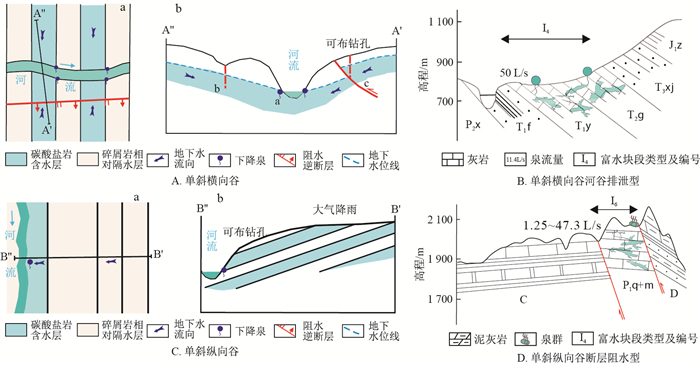
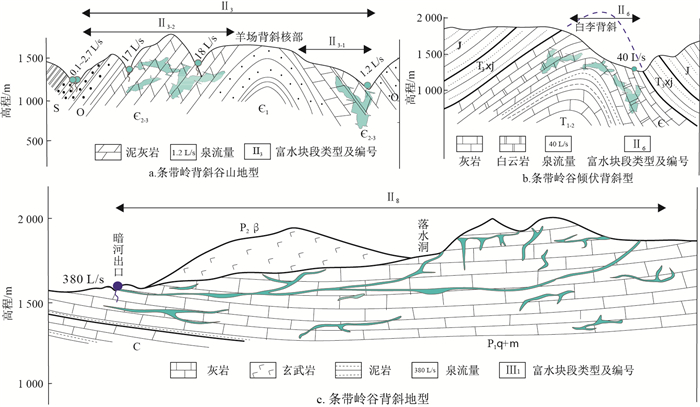


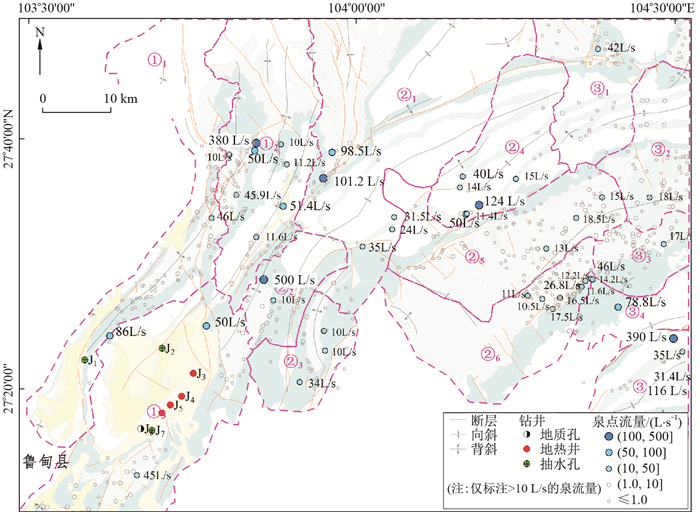
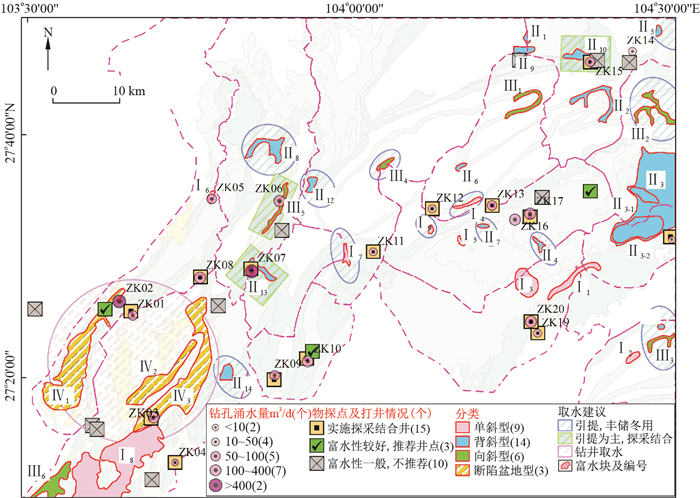
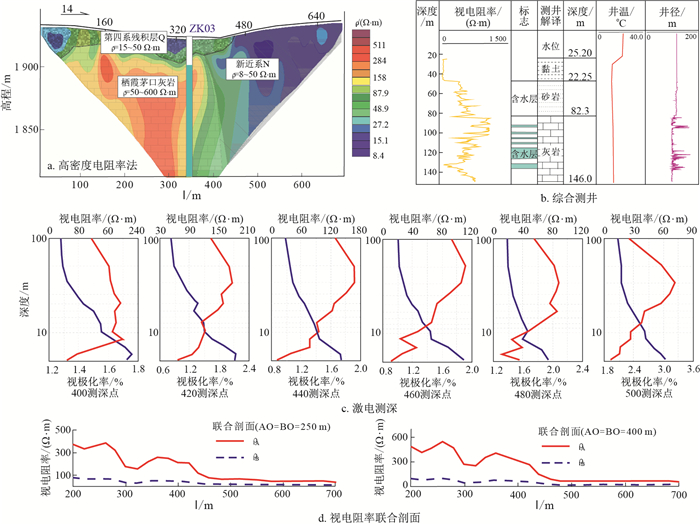
 百度学术
百度学术










